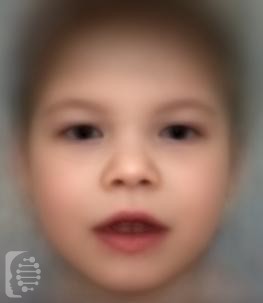What is Alpha-Thalassemia/Impaired intellectual development syndrome, X-linked?
Alpha-Thalassemia/Impaired intellectual development syndrome, X-linked is a rare genetic condition that affects mainly males. There are more than 200 reported cases to date.
The main features of the syndrome include severe intellectual disability, developmental delay, and unique facial features.
This syndrome is also known as:
Alpha-thalassemia/mental Retardation Syndrome; Nondeletion Type ATR-X Syndrome ATR; Nondeletion Type ATR2
What gene change causes Alpha-Thalassemia/Impaired Intellectual Development syndrome?
Mutations to the ATRX gene are responsible for the syndromes. Mutations to this gene are then believed to affect also the HBA1 and HBA2 genes, defects in which are responsible for alpha thalassemia.
As an X-linked recessive pattern inherited condition, males can not pass the mutation onto their sons.
Syndromes inherited in an X-linked recessive pattern generally only affect males. Males only have one X chromosome, and so one copy of a gene mutation on it causes the syndrome. Females, with two X chromosomes, only one of which will be mutated, are not likely to be affected.
What are the main symptoms of Alpha-Thalassemia/Impaired intellectual development syndrome?
Intellectual disability and delayed development are serious symptoms of the syndrome. Most individuals will have very limited to zero speech and delayed motor skills.
Common facial features include widely spaced eyes, small nose, unturned nostrils, and low-set ears. Facial features become coarser over time, leading to a flatter face and shortened nose. A very small head, short stature and skeletal abnormalities are also common presenting features.
Health conditions related to the condition include mild alpha thalassemia, pale skin, weakness and fatigue. Reflux and severe constipation are also common.
Possible clinical traits/features:
Infantile muscular hypotonia, Abnormality of metabolism/homeostasis, Short nose, Nausea and vomiting, Neurological speech impairment, Anteverted nares, Myopia, Intellectual disability, Kyphoscoliosis, Muscular hypotonia, Macroglossia, Male pseudohermaphroditism, Tapered finger, Low-set ears, Micropenis, Microtia, Hypospadias, Visual impairment, Global developmental delay, Postnatal growth retardation, Cognitive impairment, Hypoplasia of penis, Hypertelorism, Hemivertebrae, Hemiplegia/hemiparesis, Short stature, Hydronephrosis, Gastroesophageal reflux, Depressed nasal bridge, Recurrent urinary tract infections, Shawl scrotum, Renal agenesis, Posteriorly rotated ears, Seizure, Optic atrophy, Sensorineural hearing impairment, Absent frontal sinuses, Aganglionic megacolon, Ambiguous genitalia, Abnormality of the dentition, Abnormality of the tongue, Aplasia/Hypoplasia of the corpus callosum, Self-injurious behavior, Autism, Abnormality of the fontanelles or cranial sutures, Abnormality of movement.
How is it diagnosed?
To find out if someone has a diagnosis of Alpha-Thalassemia/Impaired intellectual development syndrome, it is important to have a consultation and evaluation with a clinical genetic specialist. Specialists may also suggest specific genetic testing or other types of tests to help reach a diagnosis. FDNA’s AI technology can help speed up the diagnostic process by analyzing facial features and other health information.


